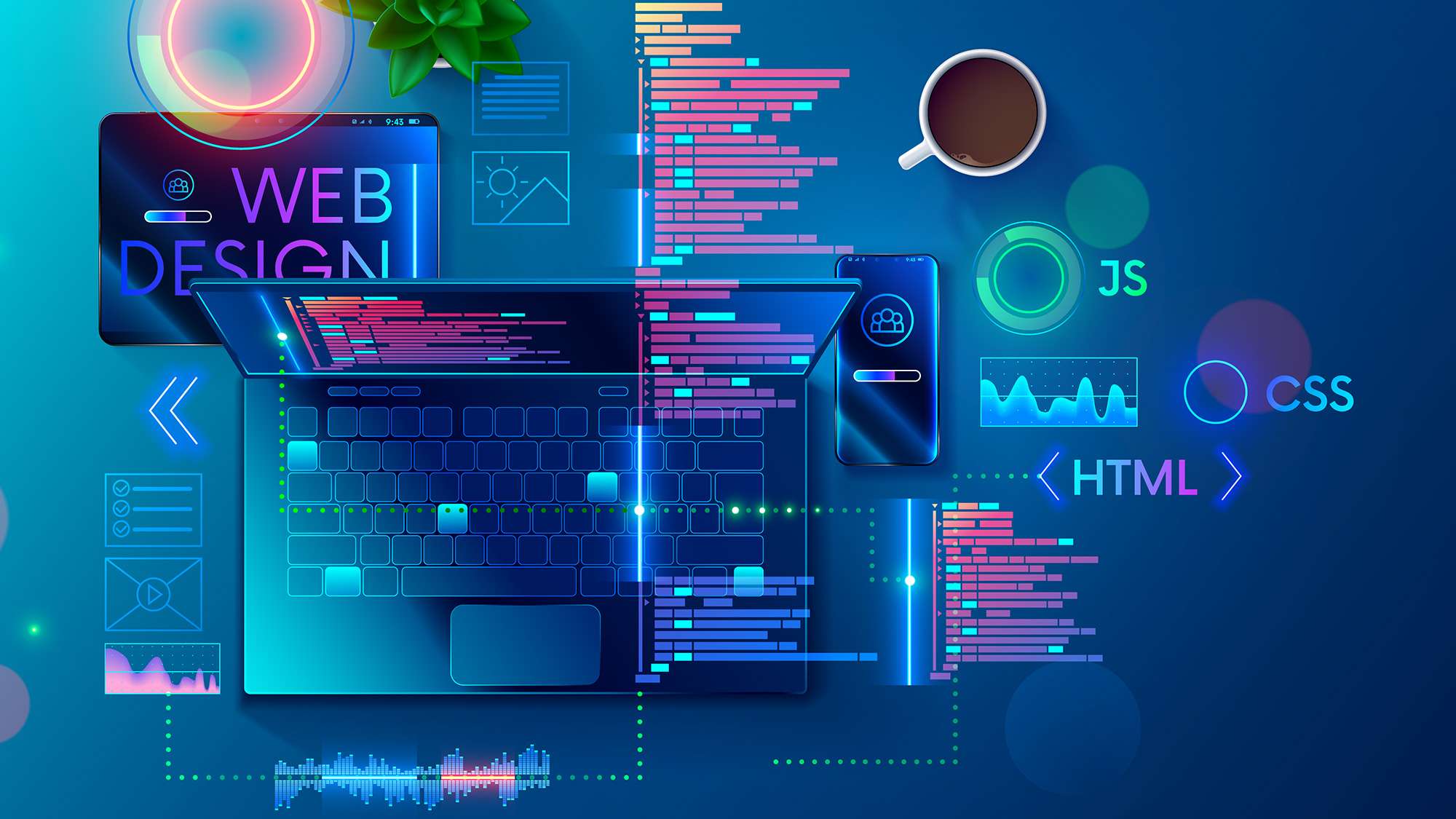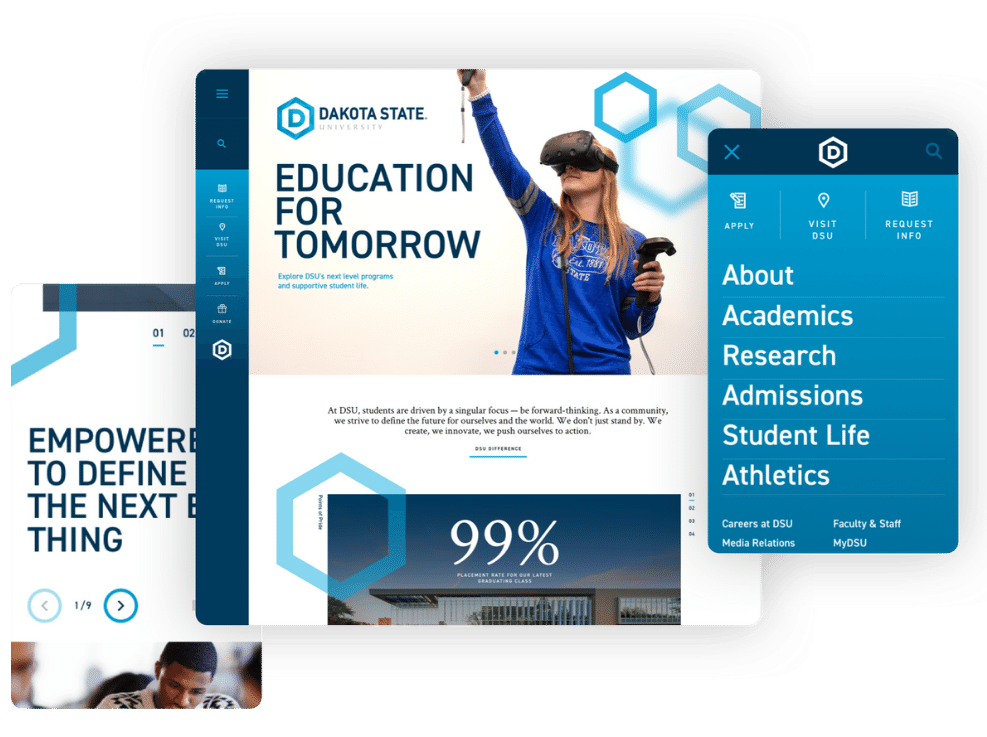The Duty of Responsive Website Design in Today's Mobile Market
The Duty of Responsive Website Design in Today's Mobile Market
Blog Article
Maximize User Experience With Innovative Internet Site Style Solutions
In today's electronic landscape, making the most of customer experience via cutting-edge site design options is imperative for businesses seeking to engage their target market successfully. By welcoming user-centric layout concepts, organizations can develop user interfaces that not just fulfill individual needs but additionally improve total fulfillment. Key elements such as receptive layouts, user-friendly navigating, and effective aesthetic power structure play an essential duty in this process. The integration of interactive components can additionally boost the customer trip, motivating a reevaluation of traditional style strategies. What techniques might arise when we consider the evolving expectations of individuals?
Understanding User-Centric Layout

To carry out user-centric layout successfully, it is necessary to carry out complete research study, consisting of customer interviews, studies, and usability screening. These study approaches provide useful data that notifies style choices, guaranteeing that the end product lines up with user assumptions. Furthermore, creating customer personalities can help developers envision and empathize with the end-users, directing the style process toward more appropriate services.
In addition, iterative design is an essential component of user-centric methods. By continuously screening and refining layouts based upon individual responses, developers can identify discomfort factors and areas of improvement, causing an extra sleek end product. Eventually, user-centric style is not merely a phase in the advancement procedure however a continual dedication to prioritizing customer demands, resulting in more engaging and reliable digital experiences.
Value of Responsive Layouts
As electronic interactions increasingly happen throughout a selection of devices, the relevance of responsive layouts can not be overstated. A receptive layout ensures that a web site adjusts seamlessly to different screen dimensions, from desktop screens to smartphones. This adaptability is essential in today's multi-device landscape, where users anticipate a appealing and constant experience no matter just how they access web content.
The primary benefit of receptive design is enhanced customer fulfillment. When a website is maximized for all gadgets, it decreases the need for zooming, scrolling, or straight navigating, which can lead and irritate individuals to higher bounce rates. In addition, internet search engine like Google focus on mobile-friendly sites in their ranking formulas, making responsive layouts crucial for efficient search engine optimization approaches.
Instead of handling different versions of a site for various devices, a solitary, fluid style can be changed, saving time and sources. Eventually, investing in responsive layouts is not simply a fad; it is an essential principle of modern-day web layout that significantly boosts individual experience and engagement.
Enhancing Navigation and Access
Reliable navigation and access are pivotal parts of a properly designed site, considerably affecting user involvement and complete satisfaction. An easy to use navigation framework enables visitors to find info rapidly and with ease, decreasing aggravation and boosting the probability of repeat brows through. Applying clear, detailed labels for navigation links, along with a rational pecking order, can guide users effortlessly via the site.
Ease of access is similarly important, making sure that all users, no matter their impairments or capacities, can connect with the site efficiently. This can be attained through making use of suitable color basics contrasts, message sizes, and alt text for photos, which with each other boost the experience for aesthetically damaged customers. Including keyboard navigating and display reader compatibility expands gain access to for individuals with diverse demands.
Routine usability screening can provide beneficial understandings into navigating effectiveness and access problems. By gathering comments from actual individuals, developers can identify pain factors and make educated modifications. Ultimately, prioritizing navigation and availability not only promotes inclusivity yet also grows a favorable user experience, enhancing the brand name's commitment to quality and individual treatment in a significantly electronic landscape.
Utilizing Aesthetic Pecking Order Properly
Visual power structure functions as a directing framework in internet site design, guiding users' focus to the most essential components on a page. By tactically organizing aesthetic components such as shade, typography, and spacing, designers can develop a clear path for individuals to follow. This framework not just improves individual experience but also boosts material comprehension.
One efficient way to establish visual hierarchy is through using dimension and range. Larger components naturally attract more attention, making headlines and essential visuals famous. Matching this strategy with contrasting colors can even more separate key web content from additional details, making sure that vital Visit This Link info stands out.
Moreover, the arrangement of aspects plays a critical function in guiding customer communication. Using a grid format can develop a natural circulation, while whitespace helps to different web content and decrease cognitive lots - Website Design. This deliberate spacing enables individuals to process details a lot more quickly, bring about boosted engagement
Last but not least, making use of constant layout patterns helps strengthen visual pecking order, supplying users with familiar signs as they browse the site. By prioritizing these concepts, developers can successfully make best use of individual experience, making sure that site visitors can effortlessly situate the info they seek.
Integrating Interactive Aspects
The consolidation of interactive elements into website layout can substantially boost individual interaction and overall experience. Interactive functions such as sliders, quizzes, and surveys not only mesmerize users but additionally advertise active involvement, making the surfing experience a lot more memorable. By urging customers to communicate, internet sites can properly maintain attention and decrease bounce prices.
Moreover, incorporating vibrant content like computer animations and hover effects includes an enticing layer of interactivity. These elements can direct individuals without effort through the site, highlighting important information and contacts us to activity. For example, computer animated buttons can attract focus and boost click-through prices.
In addition, customization through interactive devices such as chatbots or referral engines permits internet sites to provide to private preferences, fostering a feeling of connection. This customized technique not only enhances customer complete satisfaction yet also motivates repeat visits.
Incorporating analytics devices to track communications offers important understandings into customer behavior, enabling moved here constant improvement of the interactive aspects. Eventually, a properly designed interactive experience transforms an easy surfing session right into an appealing trip, resulting in enhanced user complete satisfaction and commitment. As a result, integrating interactive aspects is crucial for taking full advantage of user experience in contemporary web site style.
Conclusion

In today's electronic landscape, optimizing customer experience via innovative web site style services is essential for organizations seeking to engage their audience effectively. Eventually, prioritizing navigation and access not only promotes inclusivity but also grows a positive user experience, strengthening the brand name's dedication to quality and individual care in a progressively electronic landscape.

In final thought, making best use of customer experience via ingenious website style solutions requires a commitment to user-centric concepts. Website Design.
Report this page